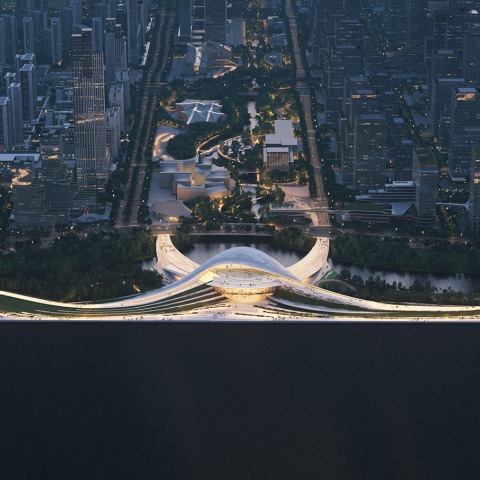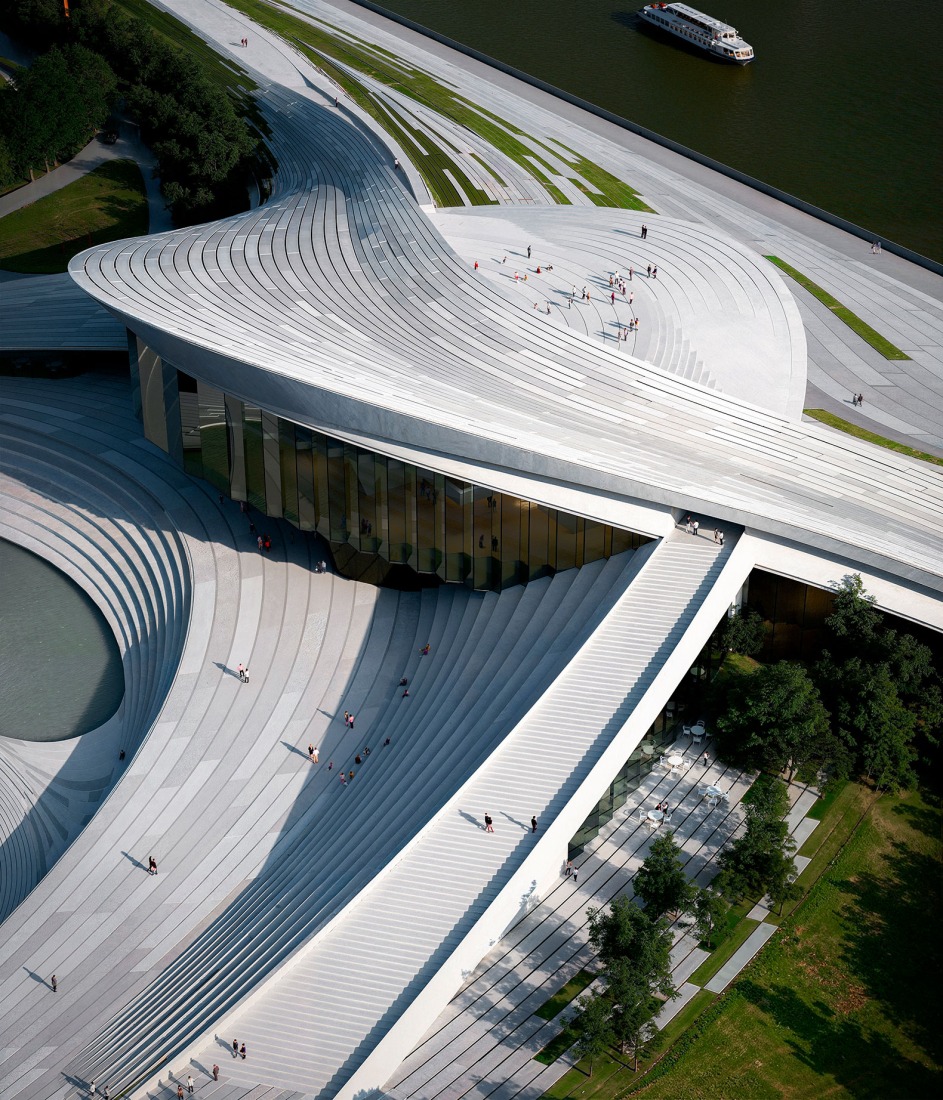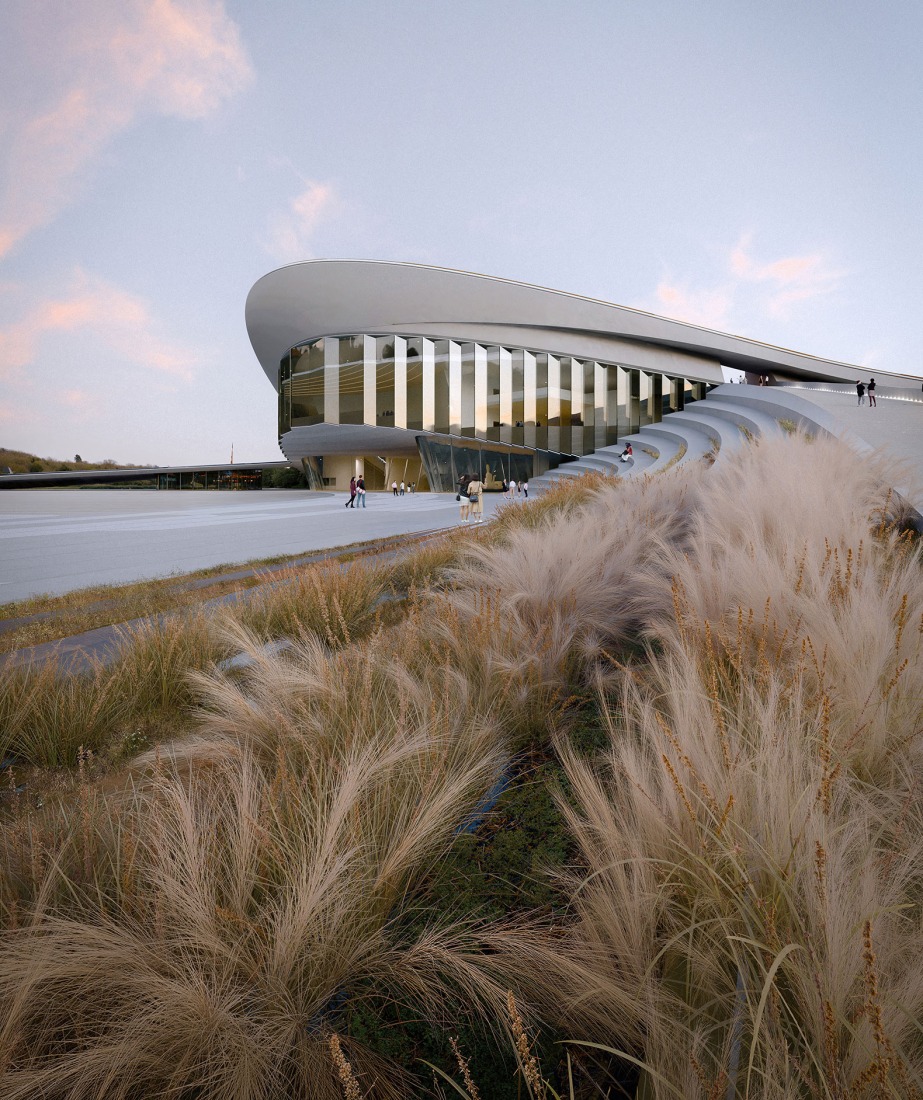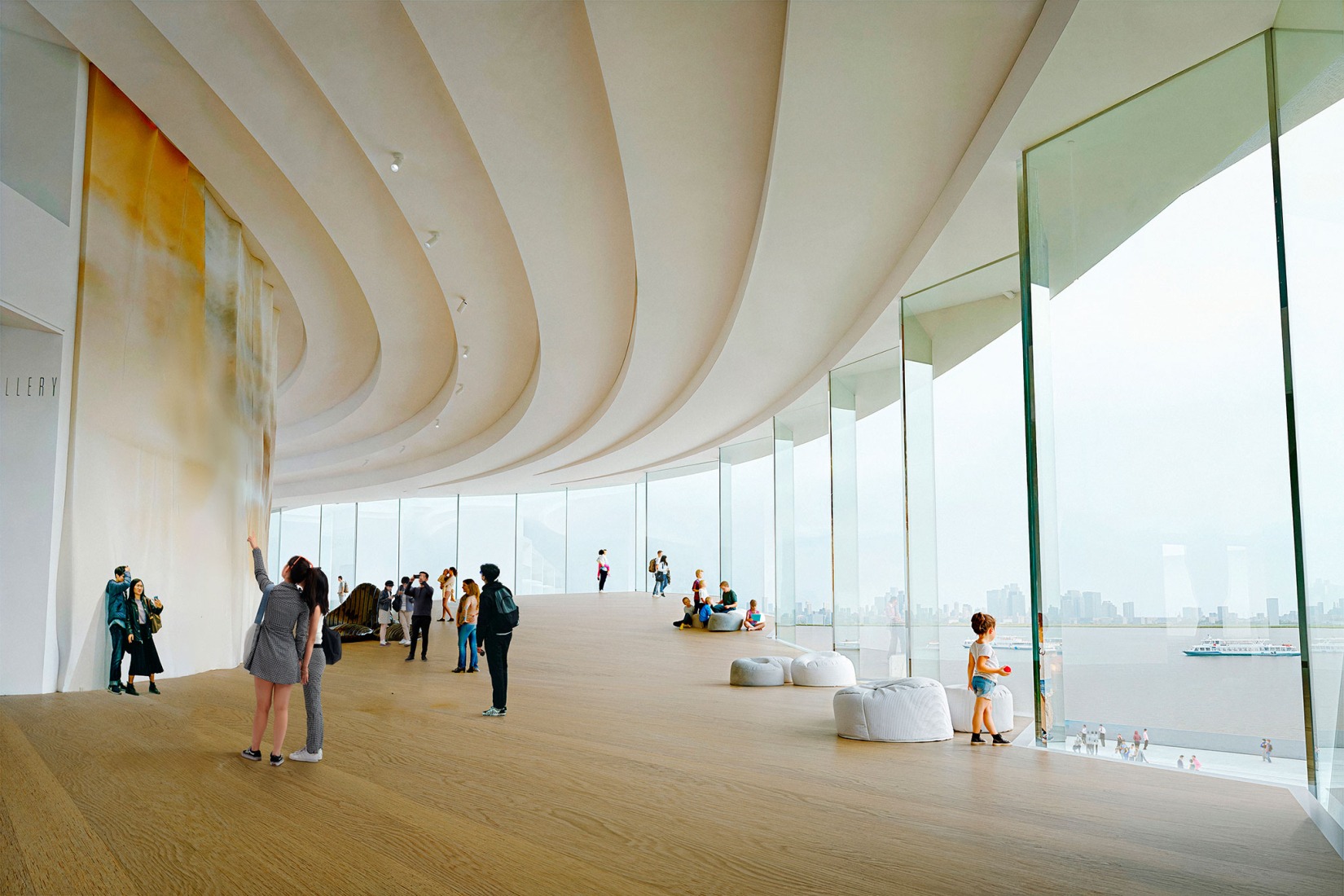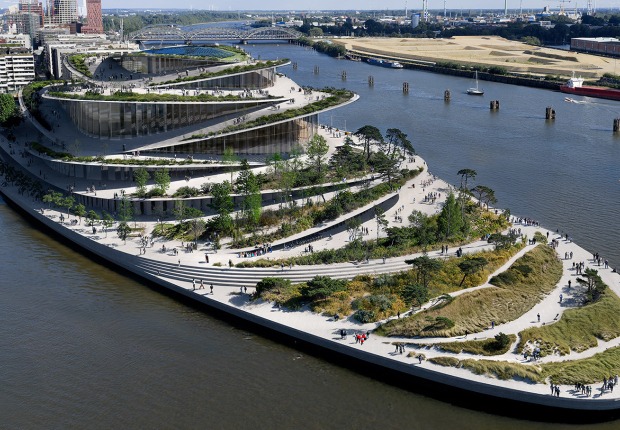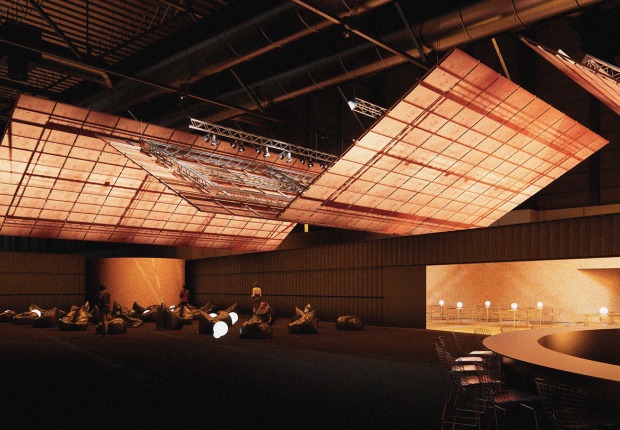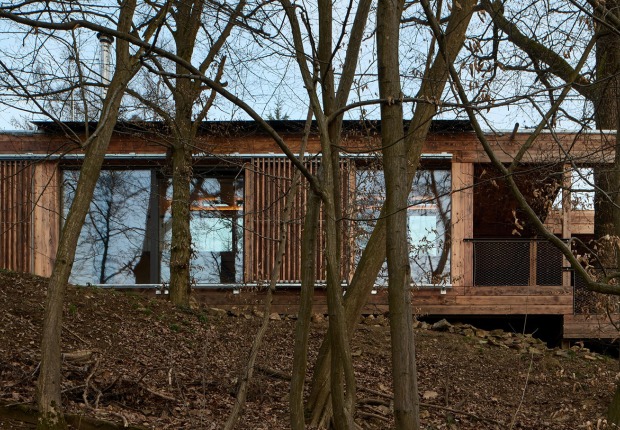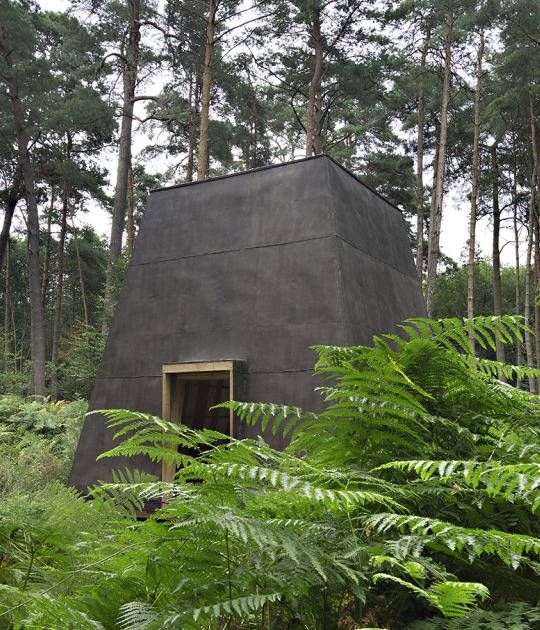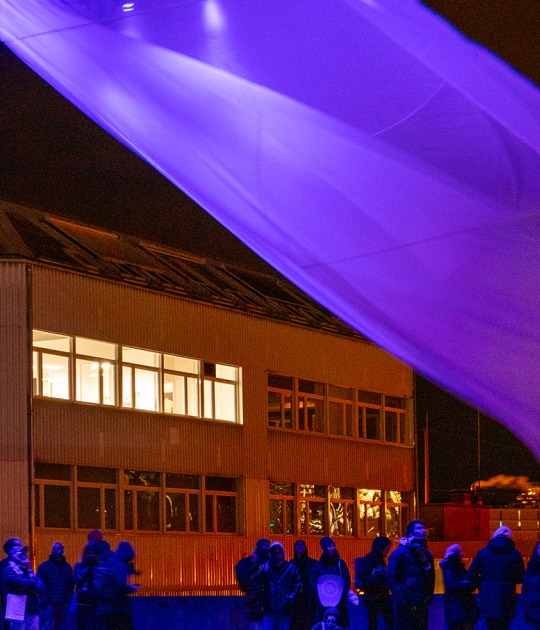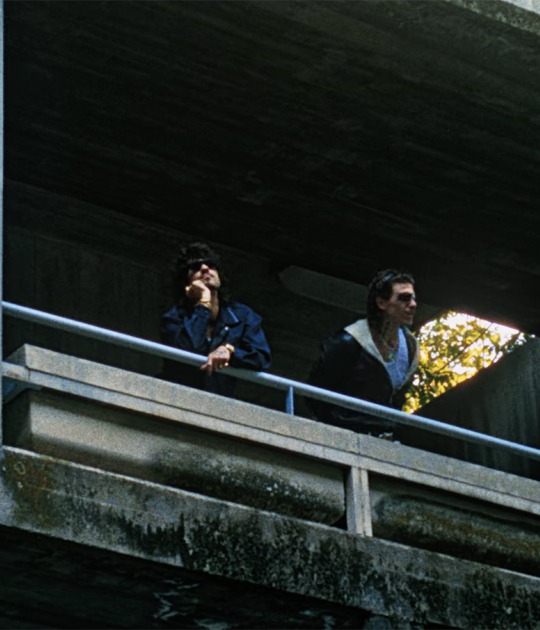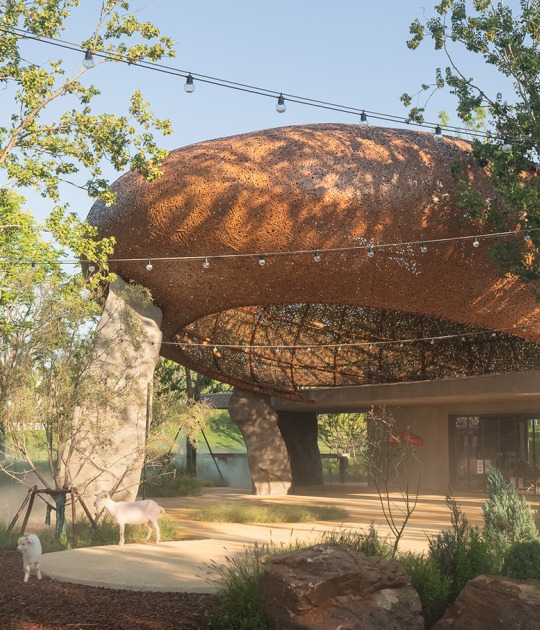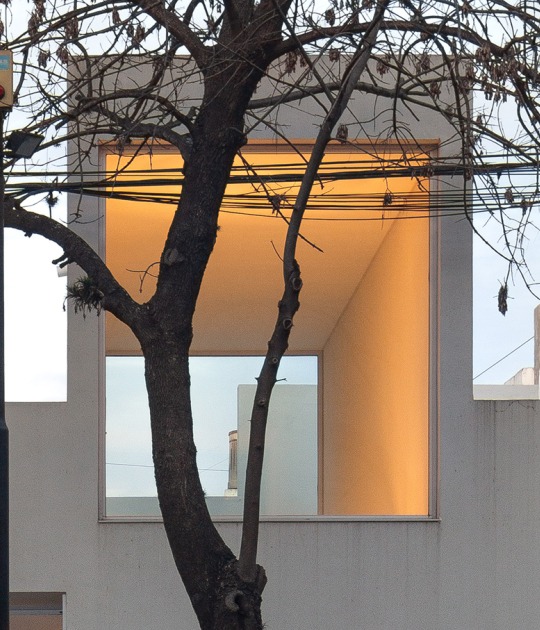
The Qiantang Bay Art Museum in Hangzhou by Snøhetta, is a monumental 18,000 m² building comprised of two undulating volumes, inspired by the rhythm of the tides. These volumes integrate all circulation routes into a central hub, shaping the public space. The main exhibition halls are located in the center, surrounded by expansive public areas that foster social interaction and community gatherings.
The team envisions the museum's architecture as a connector between nature and the city in a spatial and symbolic way, proposing to the north emblematic curved paths that guide the route along the entire river landscape, and to the east, walkways that link the urban context and art.
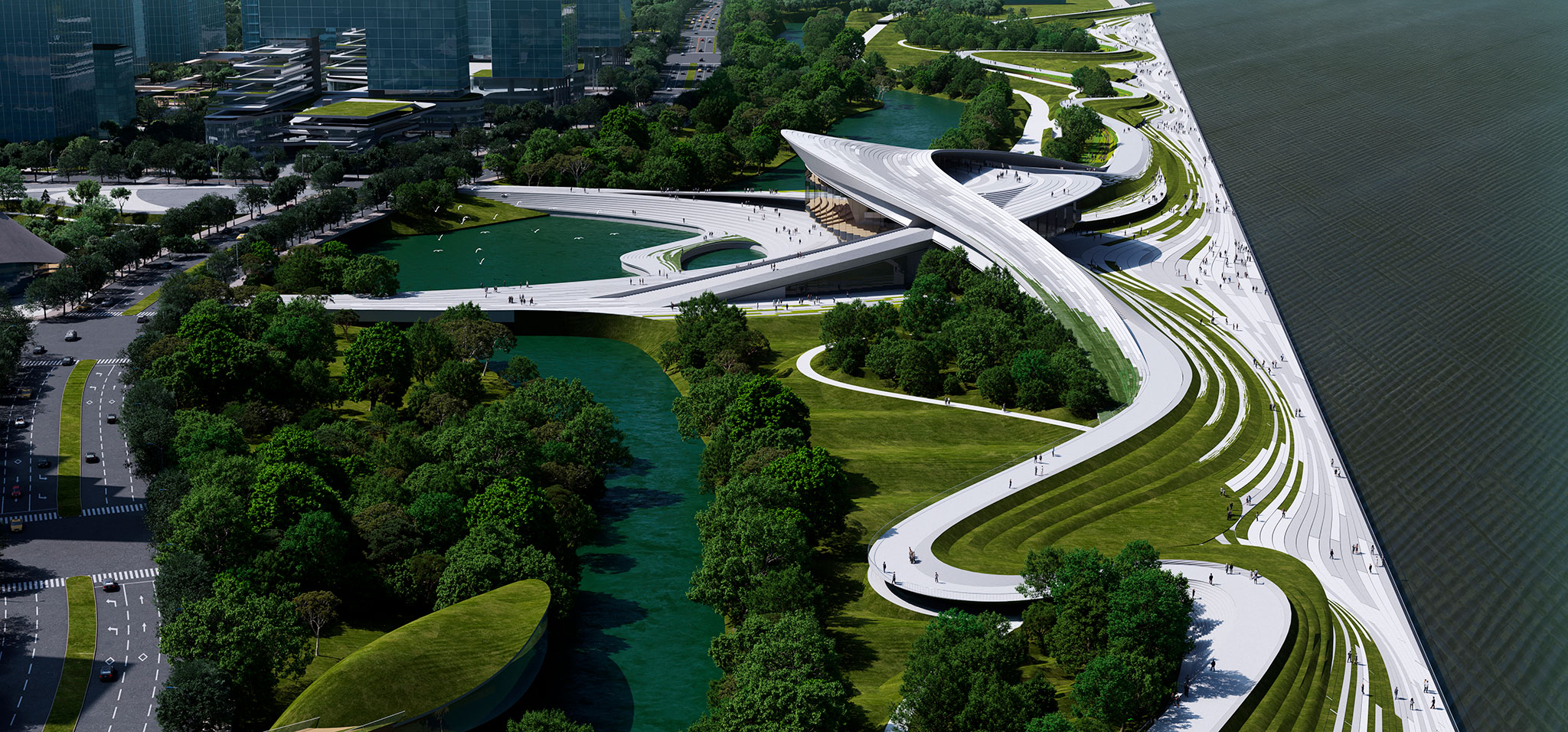
Hangzhou Qiantang Bay Art Museum by Snøhetta. Rendering by Atchain.
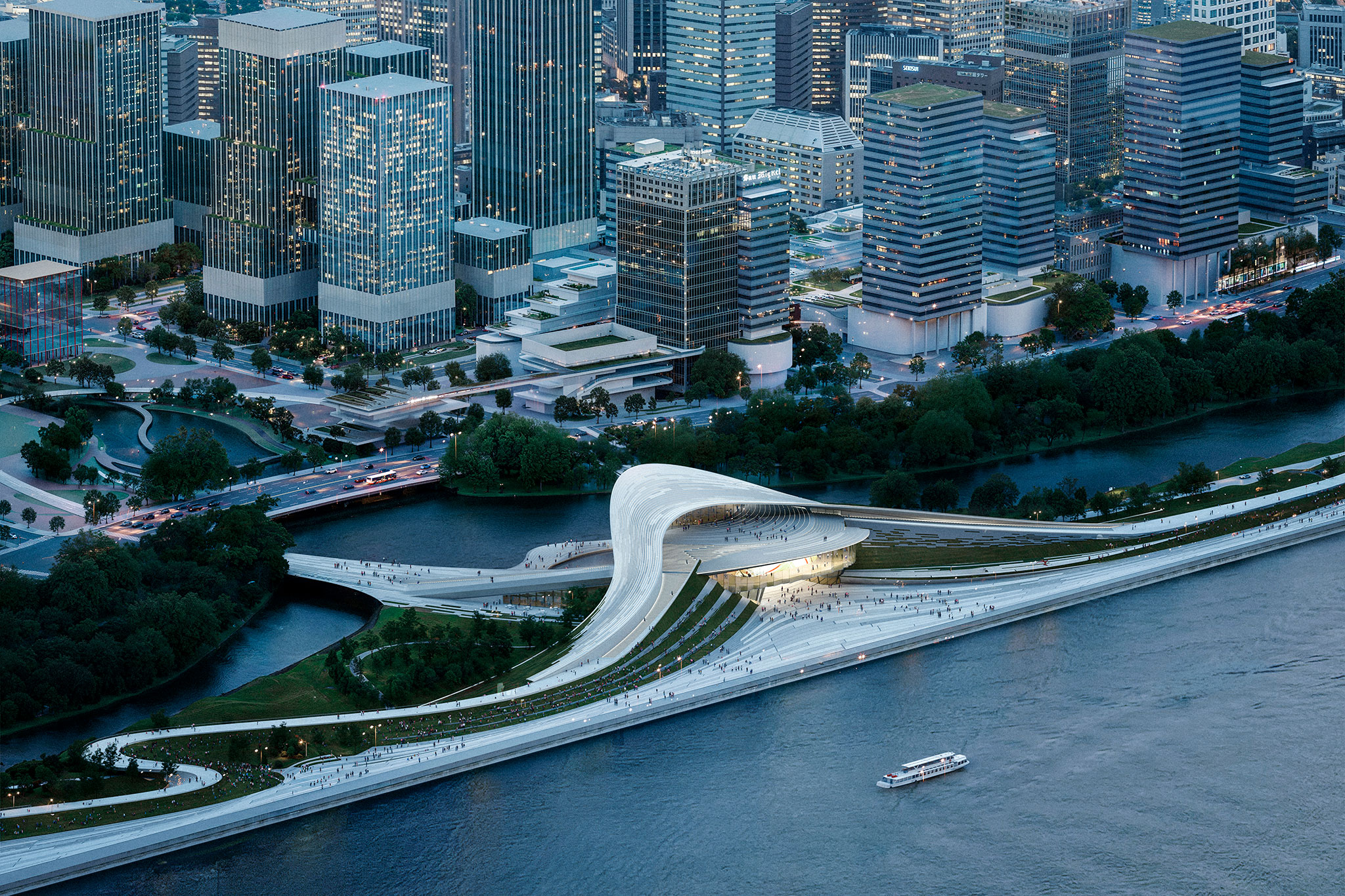
Hangzhou Qiantang Bay Art Museum by Snøhetta. Rendering by Atchain.
Project description by Snøhetta
A gateway for imagination where nature and art converge
Snøhetta has won the competition to craft the centerpiece art museum for the Qiantang Bay Future Headquarters development in Xiaoshan District, Hangzhou. Snøhetta’s winning concept celebrates the site’s spectacular setting facing both the waterfront and urban skyline, while resonating with the notion of Time and its relationship with the Arts. The design is a spatial interpretation of Art and Cultural waves and movements, envisioning the institution as a gateway for imagination where nature and art converge.
The 18,000 m2 landmark is part of Hangzhou’s ambitious downtown development along the Qiantang River. Strategically located at the confluence of the Qiantang river and Central water axis with proximate metro access, the art museum offers a striking vantage point, granting visitors sweeping vistas that stretch from one waterway to the other. Snøhetta interprets the fluidity of the waterways as a creative catalyst, shaping a vibrant avenue of creativity and art that will flow from the district’s Central Water Axis cultural cluster to the iconic Qiantang river through an iconic gateway, infusing Hangzhou’s future with renewed vitality.

Inspired by the flowing forms and connective function of a bridge, the building’s design takes the form of two wave-like volumes. This dynamic configuration not only weaves together all circulation routes into a central node, but also establishes a vibrant public realm. The undulating landscape, like the rhythm of tides, guides visitors on an exploratory journey toward the gateway at the heart of the site and upward to a rooftop terrace with panoramic river and city views, activating the community between the two waterways.
The defining feature is the meandering pathways that draw the landscape indoors. To the north, leisurely promenades lead through scenic riverscape to the rooftop skyline. To the east, bridge-like walkways transition seamlessly from the urban setting into the art museum, allowing wanderers to ascend step-by-step toward the sky and waters.
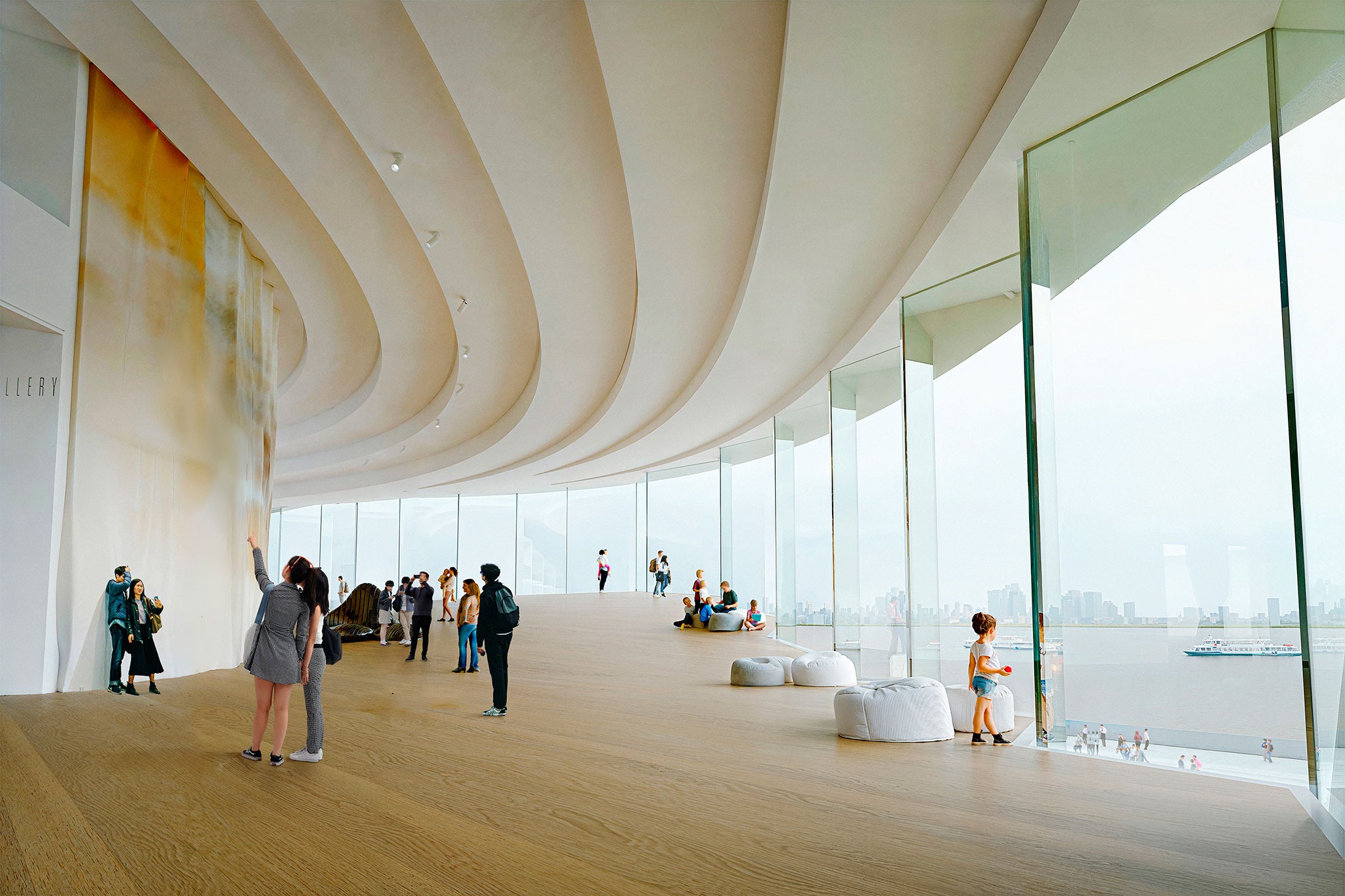
At ground level, the central Gateway acts as a spatial and symbolic connector, drawing people toward the Qiantang riverfront and inviting them to pause, reflect, and celebrate its majestic presence. Inside, the main exhibition halls are nestled at the core, surrounded by generous public spaces for social, education, exchange, and communal gathering.
Snøhetta’s design captures the essence of the site’s distinctive context, utilizing architecture and landscape as a bridge to seamlessly connect nature and city. With the Hangzhou Qiantang Bay Art Museum, Snøhetta aims to ignite a spark for arts and creativity that pays homage to the city’s iconic Qiantang River, inspiring the community and visitors alike to unleash their boundless imaginations.
